
Review on 💻 Intel Core i7-8700 Desktop Processor: 6 Core, Up to 4.6 GHz, LGA 1151 300 Series, 65W Power Consumption by Micha Ambroziak ᠌

A nice option for the money, one of the best deals.
There are a few points about the crazyness of coolers and temperature dances. 1) There are two Intel algorithms SpeedStep and SpeedShift. They change the pressure and frequency of the stone depending on the tasks - that is, the frequency drops from 4700 to 800 almost instantly if the percentage is not loaded. That's why the temperature fluctuates (because it's measured instantly and not according to the average), and that's why the cooler goes crazy. 2) In normal motherboards like Maximus X hero, there is a thin load of coolers - setting 4 temperature ranges, which correspond to the speed of rotation of coolers / CBO pump. Accordingly, there are measurement steps from several milliseconds (as I understand it, by default) to several seconds. that is, set the step for a few seconds and the speed of the coolers will no longer twitch, but will change smoothly. 3) As for temperatures - it depends on the mode of synchronization of the nuclei. By default, one core is 4300, (in turbo mode 4700), the rest are in descending order. But you can set the synchronous of all cores in the BIOS so that all 6 on 4700 and above work. In this case, it heats up a little more, and the voltage of 1.3+ is set. In general, I was afraid of overheating - but it seems that in vain. Prots with great potential for overclocking, but is friends with the right motherboards. ated 04.02. I changed the thermal paste to Phobya NanoGrease Extreme - it is almost 2 times more effective than usual ones. I put in a custom PASSIVE copper radiator (handmade), installed flow temperature sensors, it turned out PPC how cool! 4700 across all 6 cores, manual voltage 120225. In the stress tests of LinX 0.7.0, three cycles without errors warm up the max to 84 percent at the peak (average 65). Even for the buoys they never swam. So percent - super! In normal tasks, the pump is 20% and silent operation. In general, I recommend, but with a normal LSS.
- Who's warming up there? Set the CBO - silently and coldly. At standard loads, the temperature in the drain is about 40-45 degrees / Voltage per percent is around 1.1V (in idle - about 32-37 degrees). When all 6 cores are set to 4700 GHz, the temperatures in standard tasks are about 50-55 degrees (in idle, the same 37). I tried stress tests, the board itself set the voltage to 1.30-1.32. I tinkered with the power supply, it starts up perfectly at 4700 * all 6 cores when setting 120225V per core. LinX runs without problems, warming up the CPU to a maximum of 88 degrees (there was a peak of 91 degrees when the pump accelerated). This is with ASUS Multicore Enhancement and CPU SVid enabled. Probably 85-90 degrees is a lot, but judging by the horror stories that people described here (someone almost rises to 100) - either the percent is successful, or the asus is friends with the board, or everything together with the CBO allows you not to bathe. In addition, the computer is for tasks, not for stress tests, and in everyday life 50 degrees is more than acceptable. For the sake of curiosity, I tried overclocking with the Asus utility or BIOS - up to 5.2 GHz (a little on the bus (103), the rest is a multiplier, but the voltage is about 1.4V - what for) in sync across 6 cores (without scalping) while maintaining acceptable temperatures (maximus X hero). I don’t know why to a percent, if everything flies anyway.
- In the standard mode, by default, the processor frequencies are up to 4.3 GHz, that is, you need to drive a little, or turn it on in turbo mode. (although I don’t know if this is necessary, if everything pulls without brakes anyway). Floating (dramatically changing) frequencies lead to sharply jumping core temperatures, which does not reflect the actual heating of the stone, but affects the operation of fans (monitoring on the board).
New products
Comments (0)
Top products in 🧰 Computer Internal Components
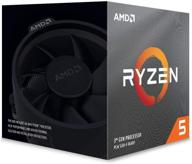
Unleash High-Performance with AMD Ryzen 5 3600XT Processor & Wraith Spire Cooler

223 Review
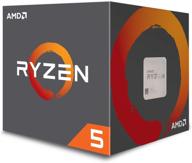
🔋 Power Up Your Gaming Rig with AMD Ryzen 5 2600 Processor with Wraith Stealth Cooler - YD2600BBAFBOX

116 Review
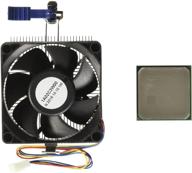
💪 AMD FD6300WMHKBOX FX-6300 Black Edition: 6-Core Processor with Unparalleled Performance

134 Review
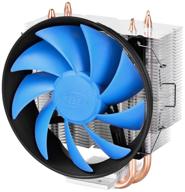
Deepcool GAMMAXX 300 CPU cooler, silver/black/blue

166 Review
Another interesting products

MacBook Retina 13-inch (A1425, A1502) and 🔩 15-inch (A1398) Bottom Case Screw Set with Pentalobe Screwdriver

11 Review
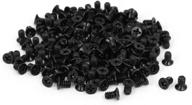
uxcell 3.5" HDD Screw Black 200pcs for Computer PC Case - Flat Phillips Head - 6#-32 - Hard Drive Fasteners

10 Review
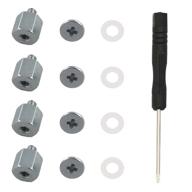
M.2 Screw Kit: Easy Mounting for NVMe SSDs on ASUS Motherboards

19 Review
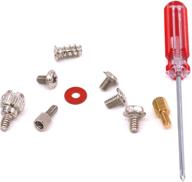
Glarks 660 Pieces Phillips Assortment Motherboard

10 Review

